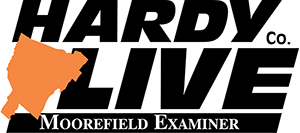By Stephen Smoot
Wyatt Earp stands tall in the history of what some call the Old – and others call the Wild – West.
The man often stands as a contradiction to his legacy. History remembers best he and his brothers dealing death at the O. K. Corrall, but Earp himself took more pride in the fact that he had only killed one man in over 100 shootouts during his fabled tenure as a lawman in Dodge City, Kansas when that locale saw wide scale criminal activity and violence.
Earp said of himself that he preferred to win with words rather than bullets. That was the code he tried to live by, even trying to talk his adversaries at the O. K. Corrall into surrender rather than certain death.
Hollywood’s definitive portrayal of Wyatt Earp, his brothers, and long time friend Doc Holliday, at least in modern eyes, came in the 1980s Western Tombstone. Kurt Russell took on the legend and made Wyatt Earp his own while Val Kilmer brought Holliday to life as no one else would, or maybe even could.
The traditions of the American Western motion picture, however, in many ways relate directly back to Earp himself.
In a sense, through his influence on early Westerns, portrayals of Earp helped him become himself on the big screen time and time again. He, certainly without intention, made his past not simply a goodbye, but the template through which America saw its past, present, and future in the 20th Century and, hopefully, beyond.
One’s mind thinks of the West almost as in a cocoon or a bubble. The wild and often violent imposition of civilization on an unorganized territory subconsciously seems separate from civilized society then and later.
In other words, a person does not expect to see an icon of the Wild West in Los Angeles, California in the 1920s. But there he was.
Late in life, Earp gravitated to the infant motion picture industry in Hollywood. He befriended a young director named John Ford, working as what the world would later call a consultant. Earp taught Ford both the Old and the Wild West from his point of view.
He helped Ford to know the fears he grew by, knowing the dreams these filmmakers had of crafting portrayals both accurate and eloquent.
One of the most important lessons that Earp tried to teach, over and above the excitement of gunfights and tracking fugitives was the code he tried to live by.
One of Hollywood’s greatest mysteries lies in did they or didn’t they. On Ford’s sets in the 1920s labored a young man. His dreams of football heroism at the University of Southern California died due to injury, but Marion Robert Morrison earned a fan in early Western movie star Tom Mix.
Mix helped Morrison get into working for the studio. He served as a set gopher (an old term derived from “go fer” whatever the boss needs.) and played bit roles in movies about football and the West.
History divides on whether the man known in the near future as John Wayne met Earp. About half of articles written about that period said he did and the other half said he didn’t.
When documentation ends, speculation can begin. And one cannot imagine a young man raised on the stories of the Old West being in the same exact place and time as Wyatt Earp and not at least nervously introducing himself and shaking his hand.
Conversely, one cannot imagine an old gentleman weathered by age and the slings and arrows hurled at him by life who does not take some pleasure in regaling the young with tales from the old, using stories of exciting times to convey moral truths.
In other words, wisdom.
Wayne must have had many opportunities to observe his idol’s conduct and interactions with others and adapt them to his own use, as young men will often do with their grandfathers or men of respect who touch their lives.
Whether or not they met, Wayne absorbed every lesson he could from the life of Earp, whether it came directly from Earp or through Ford. The legacy of Earp fed Wayne’s dreams of what a true and authentic Western character was, helping Morrison to become himself all over again as John Wayne.
Wayne insisted that his characters – with some exceptions, most notably his role as Ethan Edwards in “The Searchers”- abide by that same code. For example in his last, and next to “The Searchers,” perhaps his finest role as John Book in “The Shootist” Wayne had the director rewrite a scene in which Book shot a man in the back, explaining that Wyatt Earp would never do such a thing and neither would Book.
“The Shootist” hit movie screens at the same time as the other great Western icon Clint Eastwood had hit tremendous success. People often contrasted the amoral heroes and often violent characters portrayed by Eastwood as supposedly more authentic than Wayne’s slow moving, slow talking characters whose actions were bound by a powerful moral code of justice and how a true man conducts himself in even the most dangerous of situations and environments.
But Eastwood’s perceived authenticity actually better reflected the discouragement in America of those times, who learned that code through motion pictures as children, only to see it battered and beaten down by American actions at home and abroad.
President Ronald Reagan in 1988 stated that both he and Wayne shared the same ideal about Vietnam that “the great immorality of the Vietnam War was that our government is asking young men to give up their lives in that war when the government had no intention of winning it . . . I think that was the great immorality, and I think Duke felt the same.”
Yet both also saw heated public criticism of the war as unpatriotic and most detrimental to those fighting and dying for freedom in Vietnam.
The values held by Eastwood’s characters in the Man With No Name trilogy or “The Outlaw Josie Wales” entertained while they questioned the value and practicality of a moral code in a time and place where most men lacked it. Wayne’s characters showed conversely that such an environment demanded the strongest of codes, lest one succumb to the individual or collective temptations toward sin and self-destruction prevalent in the time.
For many Americans, the composure and strength of Wayne – learned in one way or another from Earp – came to personify what America means and how America should conduct itself, as well as how a man should act in his personal life. Certainly Reagan’s muscular approach to foreign policy with the Soviet Union paired with his almost obsessive desire to rid the world of all nuclear weapons, mirrored that ideal of peace through strength and stated intention.
There is no doubt that Reagan not only played upon, but also believed deep in his soul, that those values he saw as American served as the best beacon for the “city on the hill” that he described the United States as time and time again.
And that brings this piece back full circle, to its original intent.
For every older man or woman who has “been there and done that,” or those who have lived hard and earned their degree from the University of Hard Knocks, or has gone to great success in the world, each one of these valued elders should keep something in mind.
The old-timers need to remember that no matter what they say or what they do in public, there are boys and girls quietly watching and learning how they should live and treat others even if they have not chosen to share their wisdom directly. .
And young people need to understand the value of the knowledge and wisdom stored in heads adorned with gray, silver, and white – or nothing at all. Those heads are filled to the brim with advice on what to do, or what not to do.
Wyatt Earp never could have known that what he shared on the property of a small and brand new business with men who could have been his grandchildren or great-grandchildren – he never could have known what broad and deep impact he would have on the future of his country and its place in the world.
The lesson here is, older folks should share and younger folks should listen. One will never know where that knowledge and wisdom could lead.





